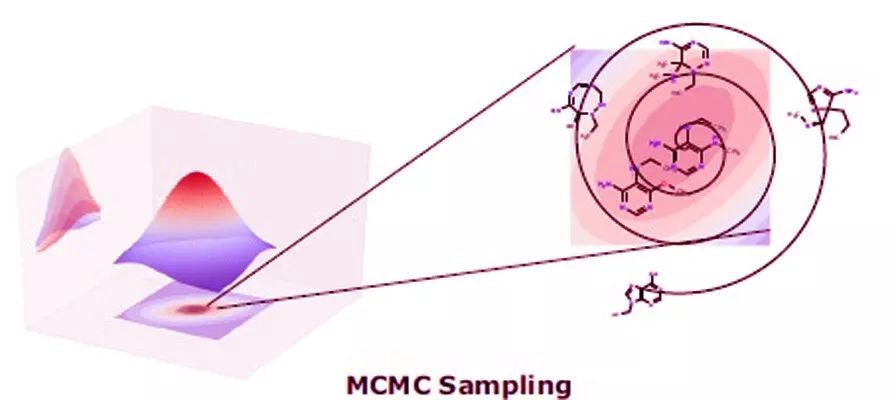孙熙宸
加好友
孙熙宸 2020-01-21
来源:知社学术圈
机器学习算法的最新成果具有材料全自动逆设计的潜力。但仍有些关键挑战阻碍着这种潜力的实现。首先,为确保全自动框架的实用性,需要分子结构紧凑而准确的数字表示形式,以便数字化已知化学空间。其次,需要一种计算有效的材料结构到材料属性的映射。虽然人工神经网络已部分解决了这一挑战,但是训练人工神经网络需要大型的属性数据库,因而又带来了新的挑战。最后,还需要一种适当的搜索算法,以便能够扫描已知和迄今未知的分子的化学空间,同时要能够确保候选结构形成有效分子。
来自印度三星研发院三星技术研究所下一代研究实验室的Piyush M. Tagade和Shashishekar P. Adiga,开发了一种基于深度学习的逆预测框架,即“新型条件采样进行属性驱动的材料设计的结构学习”(SLAMDUNCS),用于精准设计具有目标性能的材料。他们将贝叶斯推论应用于三种代表性应用中,设计具有所需性能的有机分子:锂离子电池的高稳定性电解质、有机薄膜晶体管的n型和p型有机半导体、有机太阳能电池中使用的有机小受体分子。作者成功地在数据库外生成了具有目标性能的分子,其中的一小部分已通过第一性原理模拟作过验证。这主要基于他们的贝叶斯框架实现的,该框架可以获得一组分子结构,而不是由现有技术最优化方法预测的单个结构。
此外,他们使用受限玻尔兹曼机编码基本化学规则,从而能够生成数据库非固有的分子结构,而无需使用任何试探性或组合性规则,进而能针对目标应用作完全自动化分子设计。尽管他们只是将SLAMDUNCS用于有机分子的设计,但能很容易地扩展到无机材料的设计,如半导体、压电和热电材料。他们的工作清楚地表明,SLAMDUNCS确实可以快速预测具有目标性能的分子/材料,也可以轻松地将该方法扩展到其他类型的材料和多种性能(包括热、电和光学性能)的预测。而且,SLAMDUNCS可用多元概率分布来简单量化似然函数,以便用于具有多个目标性能的分子逆预测。
该文近期发表于npj Computational Materials 5: 127 (2019),英文标题与摘要如下。

Attribute driven inverse materials design using deep learning Bayesian framework
Piyush M. Tagade, Shashishekar P. Adiga, Shanthi Pandian, Min Sik Park, Krishnan S. Hariharan & Subramanya Mayya Kolake
Much of computational materials science has focused on fast and accurate forward predictions of materials properties, for example, given a molecular structure predict its electronic properties. This is achieved with first principles calculations and more recently through machine learning approaches, since the former is computation-intensive and not practical for high-throughput screening. Searching for the right material for any given application, though follows an inverse path—the desired properties are given and the task is to find the right materials. Here we present a deep learning inverse prediction framework, Structure Learning for Attribute-driven Materials Design Using Novel Conditional Sampling (SLAMDUNCS), for efficient and accurate prediction of molecules exhibiting target properties. We apply this framework to the computational design of organic molecules for three applications, organic semiconductors for thin-film transistors, small organic acceptors for solar cells and electrolyte additives with high redox stability. Our method is general enough to be extended to inorganic compounds and represents an important step in deep learning based completely automated materials discovery.

来源:zhishexueshuquan 知社学术圈
原文链接:https://mp.weixin.qq.com/s?__biz=MzIwMjk1OTc2MA==&mid=2247501319&idx=2&sn=d1c8b13ba3eb1b03ba816b3a1f3f68ce&chksm=96d438f8a1a3b1eefb445817bfe7289b71bd7fb5ed53dcc856f2ba832125e9c89588a4f5fb9f#rd
版权声明:除非特别注明,本站所载内容来源于互联网、微信公众号等公开渠道,不代表本站观点,仅供参考、交流、公益传播之目的。转载的稿件版权归原作者或机构所有,如有侵权,请联系删除。
电话:(010)86409582
邮箱:kejie@scimall.org.cn

加拿大核电协会:世界要是真的担忧气候变化,那就上核电吧!
高分子绝缘材料
分子筛材料

分子材料压电性不足难题破解

研究前沿:Nature-分子筛材料MOF实现动态分子筛选

金属3D打印即将成为现实

科学家发现饥饿素抑制分子,可用于治疗糖尿病厌食症
分子复合材料

透明太阳能技术:引领未来浪潮

反铁电分子材料研究取得进展